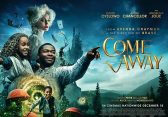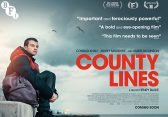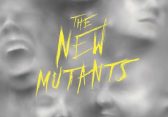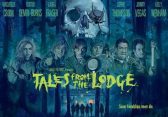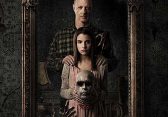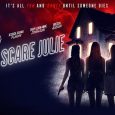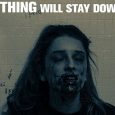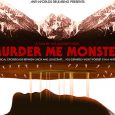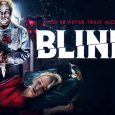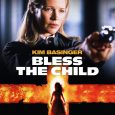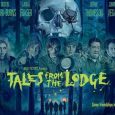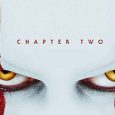By name alone, James Wan and Leigh Whannell don’t quite have the recognition in horror as, lets say, Wes Craven or John Carpenter do. But from their work, it’s a safe bet that the pair will be remembered for years to come. Saw, the most successful horror franchise of all time, was their creation. Well, the first one at least. Insidious sees them pairing with the team that brought us Paranormal Activity (director Ori Peli and producers Jason Plum & Steve Schnieder) for another low budget horror that is minimal on blood and gore but packs in as many jump scares as possible.
A married couple, Josh (Patrick Wilson) and Renai (Rose Byrne), move into a new house with their three children. Whilst exploring the attic, their oldest son Dalton (Ty Simpkins) falls from a ladder and bumps his head. The next morning, as Josh goes to wake his son up, he simply doesn’t respond. The devastated parents come to the conclusion that his coma came about because of the fall he’d taken the previous day, and the pair must alter their lifestyles to care for their son. But when increasingly spooky occurrences start around the house, Renai insists on moving. If anything, this makes matters worse and the hauntings continue. After exhausting all rational options, Renai brings in a psychic medium, Elise (Lin Shaye, who was the teacher in the original Nightmare On Elm Street), who reveals that it’s Dalton who’s haunted, not the house. And when she reveals an extraordinary method to bring him back from his ‘coma’, the family must risk more than they ever imagined to rid the house (and their son) of demons.

Even psychic mediums use MySpace.
It all starts off familiarly enough; even though the poster clearly states “It’s not the house that’s haunted, it’s him”, Wan originally gives us scares by using the tried and tested methods seen in countless haunted house movies. Creaking floorboards, strange noises and spooky shadows all feature heavily, but as soon as it’s revealed that Dalton is actually the troubled one, the visual aspect of horror goes into overdrive and subtlety is tossed aside to give way for in your face imagery. This isn’t a bad thing; the success rate for scares was at about 95% for me, but I’m easily startled. Honest.
The score is a major factor in the films brilliance; shrieking violins and unsettling piano chords send us right back to how horrors of yesteryear used to sound. It’s not only the orchestral score that sends shivers down your spine; one particular song is quite possibly the creepiest and most unsettling piece of music I’ve ever heard – Tiptoe Through The Tulips With Me by Tiny Tim. Take a listen, and even without seeing the film you can see why it was used. What really makes it work though is it’s quite an upbeat song, set to the disturbing imagery of a small child dancing. Truly terrifying.
All characters are likeable, and to an extent, easy to relate to. They aren’t exaggerated persona’s; simply average joes like you and me. So when the plot does get a little silly, their performances keep things grounded. As for the narrative becoming slightly ridiculous in the third act, it’s still hugely enjoyable but is a visible step away from the kind of scares that preceded it. If I had to compare it to another film, the closest relative would be 2009’s Drag Me To Hell: it’s a modern day horror that incorporates methods used in older horrors.
With a talented team behind the camera and a more than able cast, Insidious is one of the scariest horrors of the last ten years. If I was to take a leaf out of a fellow reviewers book, I’d end with a pun such as “It’s frightfully good”. But I’m not. So ignore that.

